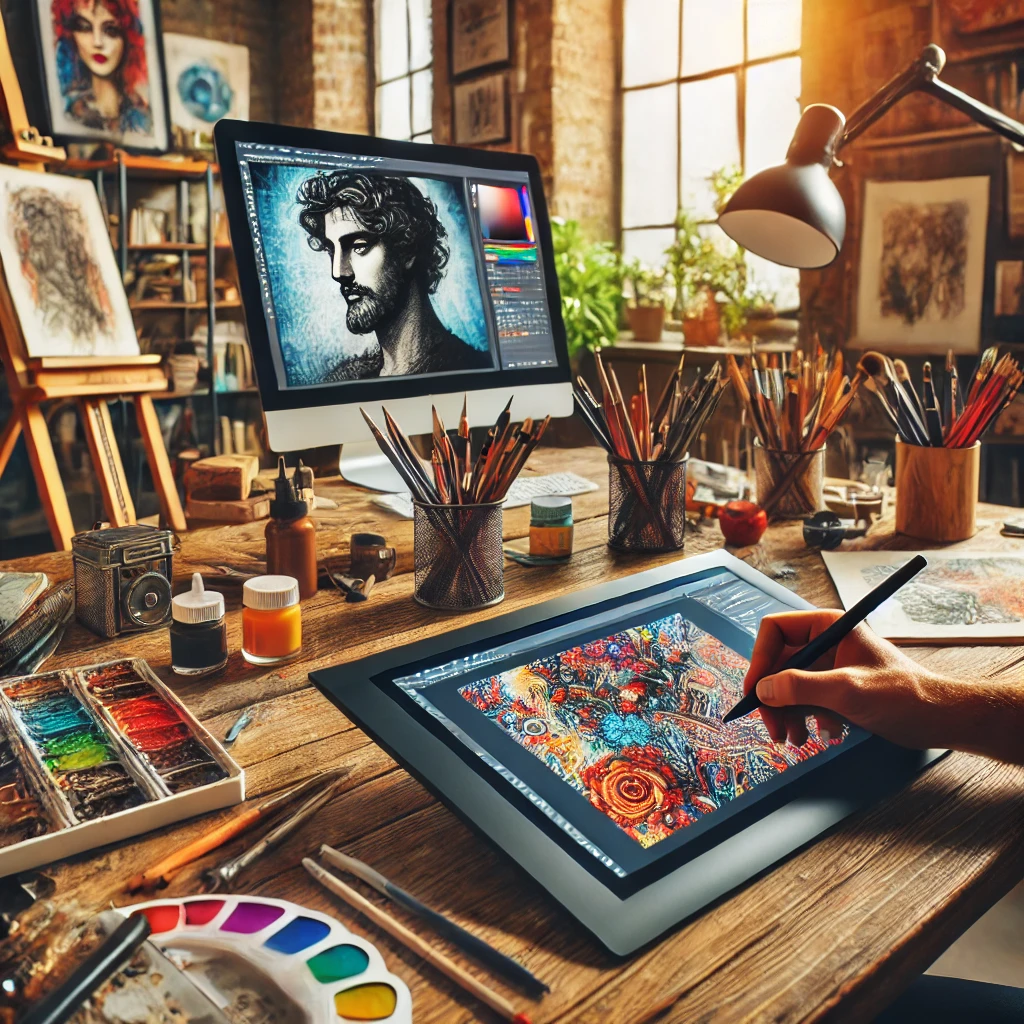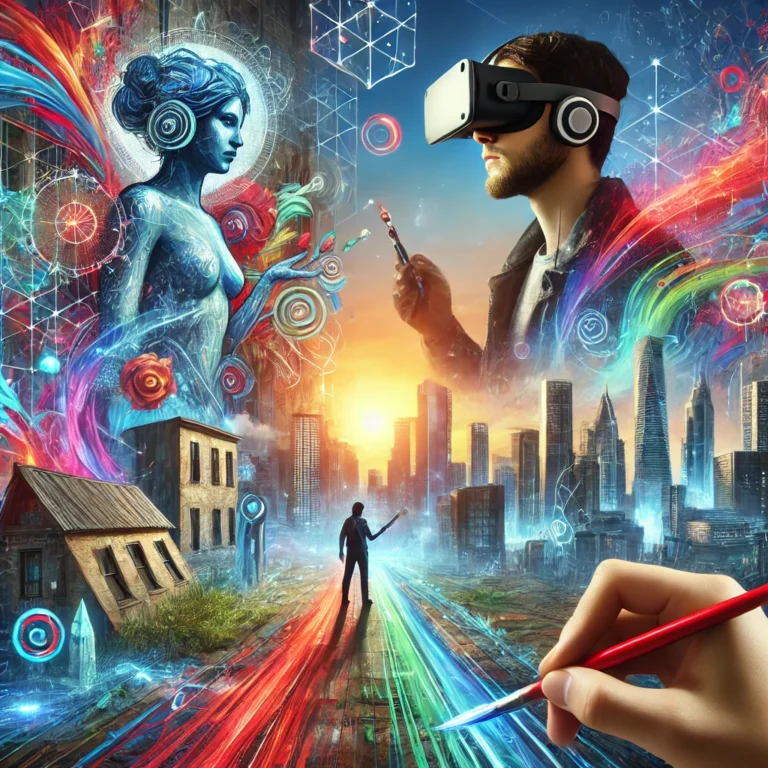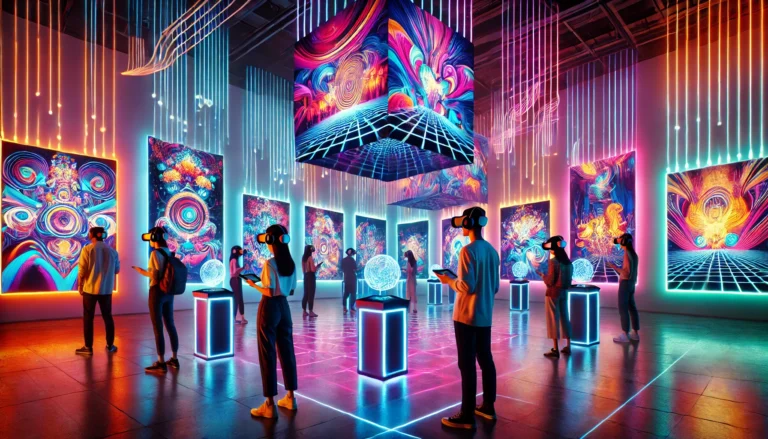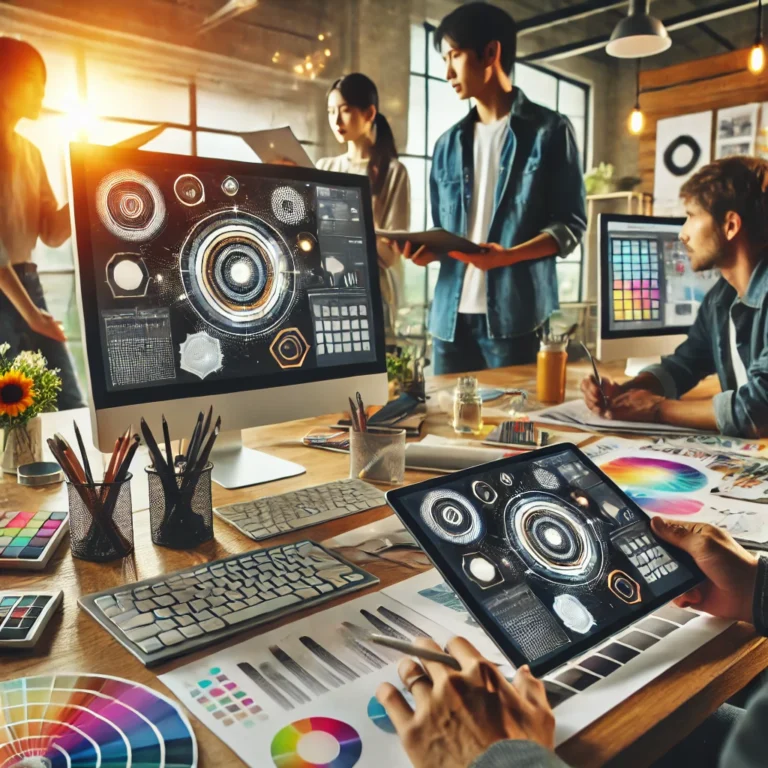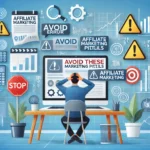Introduction
Imagine stepping into a gallery where every brushstroke pulses with digital life. Art is no longer confined to a canvas but dances freely in a virtual realm. I remember the first time I saw a digital art installation—a mesmerizing blend of light, sound, and interactive visuals. The traditional space transformed into a dynamic, living experience.
Today, technology is not just a tool; it is a new kind of palette. It redefines how we create and perceive art. Whether you’re an emerging artist or a young professional eager to explore digital media, the fusion of art and technology opens endless possibilities. This journey invites us to reimagine what art can be—vivid, immersive, and boundless.
For more insights on emerging trends, check out this leading art news site.
The Historical Evolution of Art & Technology
Early Innovations in Art and Technology
The relationship between art and technology dates back centuries. Early photographers experimented with rudimentary digital manipulation, laying the foundation for modern digital art. Over time, technological advancements transformed artistic tools.
The Transition from Traditional to Digital
Imagine a painter who once relied solely on brushes and oils. Now, they have access to advanced digital tools that simulate light, shadow, and motion. This shift wasn’t instantaneous. It was a gradual process where each new tool acted as a stepping stone. Artists moved from sketchpads to full-blown virtual reality studios, discovering new ways to express their creativity.
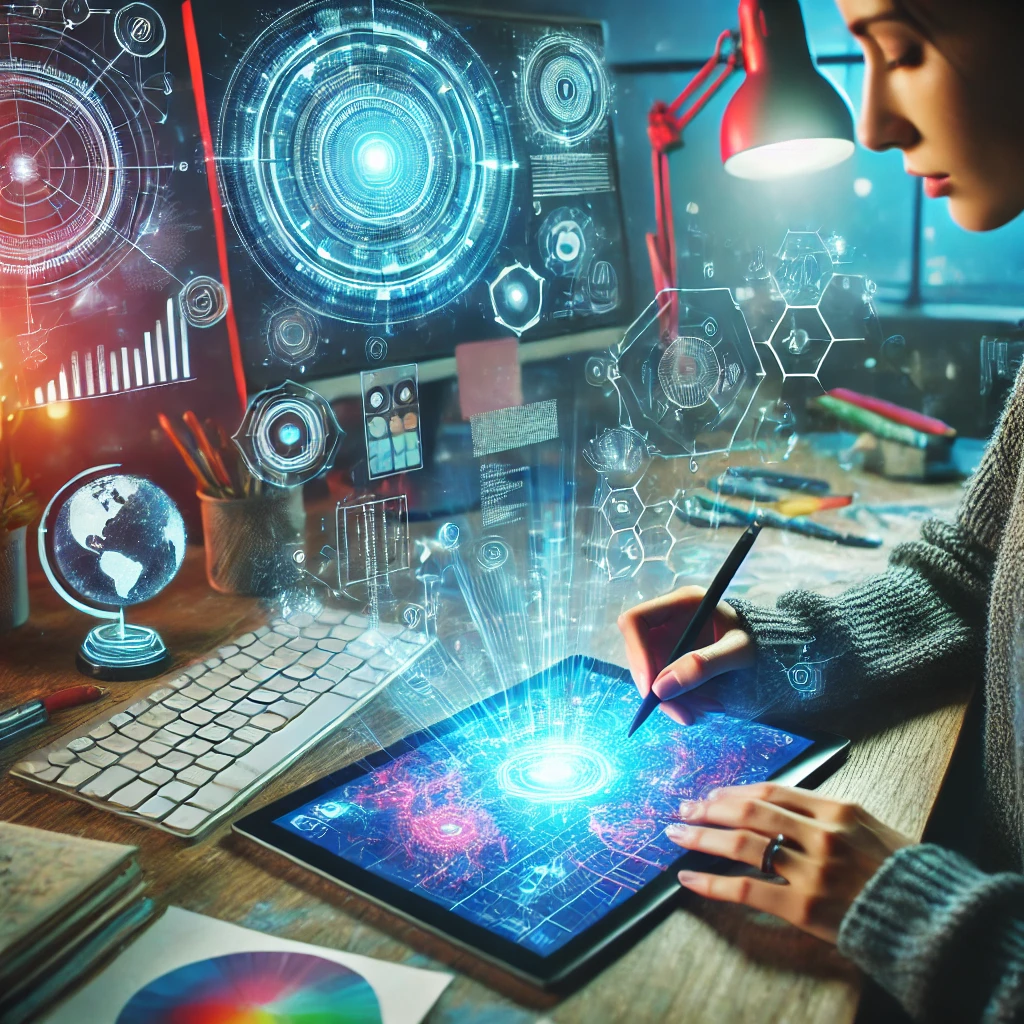
Reflection on Artistic Growth
How did these early innovations shape today’s digital art? How did traditional artists adapt to these technological changes? Every new tool contributed to the grand tapestry of art history, making digital creation more accessible than ever.
Modern Digital Art Techniques
Expanding Creative Possibilities
Modern digital art is not just about replicating traditional techniques on a computer. It’s about rethinking the entire creative process. Tools like Procreate, Adobe Creative Suite, and 3D modeling software offer features that enhance precision and flexibility. With them, artists can experiment, adjust, and refine their work effortlessly.
Museums like Tate have embraced new media, showcasing centuries of creativity through Tate’s digital collections.
Merging Tradition with Technology
For many, transitioning to digital art felt overwhelming at first. However, learning to use digital tools is like mastering a new language. Over time, it unlocks an entirely new realm of artistic expression. Traditional techniques, such as blending colors or layering textures, are now augmented by digital advancements. This fusion creates innovative art forms that were once unimaginable.
Exploring Digital Art Communities
Online platforms and social media showcase digital artists’ journeys. These spaces provide inspiration, feedback, and collaboration opportunities. As a result, creators refine their skills and push artistic boundaries further.
Interactive Technologies in Art
Transforming the Viewing Experience
Interactive art redefines how audiences engage with creativity. Technologies like augmented reality (AR), virtual reality (VR), and artificial intelligence (AI) bring static artworks to life. I once attended an exhibition where digital landscapes reacted to my presence, making me feel like part of the artwork itself.
From Passive Viewing to Active Participation
Interactive art turns spectators into participants. Whether through AR murals, VR galleries, or AI-generated compositions, these technologies create immersive experiences. They invite audiences to engage rather than just observe.
Real-World Applications
Public installations now use motion sensors to alter projected images based on audience movement. Digital canvases change in real time, adapting to the viewer’s presence. These examples illustrate how art and technology create new dimensions of interaction.
The Business of Art in the Digital Age
Monetizing Creativity
Technology has revolutionized the art industry, turning creative work into a viable business. Artists can now sell their work globally through online galleries, NFT platforms, and digital marketplaces. Social media amplifies exposure, enabling artists to reach wider audiences.
Tools like Adobe Creative Cloud have revolutionized the way we layer, blend, and refine artwork in real time.
Leveraging Digital Marketing
Affiliate marketing and brand partnerships provide additional revenue streams. Artists can recommend tools, courses, and software they trust while earning commissions. These opportunities allow creators to monetize their expertise while helping others navigate the digital art world.
According to Artsy’s market insights, digital platforms are reshaping how artists connect with collectors worldwide.
Overcoming Challenges
While digital platforms offer new possibilities, they also present challenges. How do artists stand out in a crowded market? What strategies help build a loyal audience? Understanding these dynamics is crucial for long-term success.
Future Trends and Innovations
The Next Wave of Creativity
The future of art is evolving rapidly. Blockchain technology is securing digital ownership, while AI-powered tools are generating unexpected artistic outputs. These innovations expand the boundaries of creative expression.
Emerging Artistic Frontiers
Virtual exhibitions, AI-assisted art, and interactive installations are becoming more popular. These trends suggest that art will continue to merge with technology in new and exciting ways. A recent Digital Trends report highlights how AI and blockchain are influencing the next wave of creative exploration.
Preparing for the Future
Which emerging technologies could transform your creative process? How can artists stay ahead of the curve? Thinking about these questions helps shape the future of digital art.
Visuals and Media
Enhancing the Reader Experience
A well-structured blog post benefits from engaging visuals. Here’s how multimedia can improve comprehension and enjoyment:
- Images: High-resolution photos of interactive installations and digital art processes.
- Videos: Short clips from digital exhibitions or artist interviews.
- Infographics: Timelines of technological advancements in art.
These elements make the content more dynamic and immersive for the audience. You can find free resources for professional-looking visuals on Unsplash’s high-resolution images platform.”
Platforms such as VRScout provide insight into the latest VR exhibitions and immersive technologies.
Conclusion
Art and technology continue to evolve, creating new opportunities for expression and engagement. From early innovations to modern digital techniques, the creative landscape has transformed significantly.
Whether you’re an aspiring artist or an experienced professional, embracing these changes will help you stay ahead. The future of art is interactive, digital, and full of possibilities. Now is the time to explore, experiment, and redefine what art can be.
For further inspiration, explore MoMA’s online exhibits to see how museums are adapting to the digital age.
Audience Engagement
Join the Conversation
Your input makes this discussion richer. Here’s how you can participate:
- Share your thoughts: What digital art tools have you used? How have they changed your creative process?
- Showcase your work: Tag us on social media with your digital creations.
- Stay updated:
- Subscribe to our newsletter for more insights into the art and tech space. Join Reddit’s Digital Art Community to connect with fellow creators and get real-time feedback.
Let’s shape the future of digital art together!

